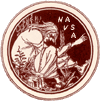North American Victorian Studies Association Conference 2014
London, Ontario, Canada
November 13-15, 2014
Deadline: March 1, 2014
“Victorian Classes and Classifications”
Victorian Britain belonged to the classifying age. Imperial
expansion and new techniques of observation and production confronted Britons
with an expanding universe of natural and man-made phenomena. In
response, scientists, writers, artists, and educators sought to articulate some
underlying sense of order through ever more complex systems of organization,
arrangement, and tabulation. Natural philosophers vastly extended and revised
the taxonomies of Linnaeus. Medical professionals developed new diagnostic
tools and coined a broad range of new pathologies and diseases. Criminologists
gathered biometric data that allowed them to constitute and apprehend criminal
types. Literary critics debated the rise of new classes of literature, from the
penny dreadful and sensation fiction to the naturalist novel. Librarians set
out the protocols for indexing the classes and sub-classes of literature that
resulted from the vast outpouring of printed matter. Teachers began to organize
their classrooms into distinct groupings of students by age and ability. But
with these efforts came, too, a new concern and fascination for that which
exceeded classification, the anomalous, the mutation, the hybrid, the
monstrous, and class struggle emerged as a theory of history and as a basis for
political organization.
Conference threads might include:
- Varieties, species, genera, and types of living organism and inanimate object
- Literary genres, parts, classifications, and forms of publication
- Social class and its material embodiment in modes of travel, commodity culture, fashion, and the built environment
- Pedagogy and the classroom
- The sciences and pseudo-sciences of human classification: racial science, criminology, and sexology.
- Character types and body types
- Breeding, rank, and class
- Museums, exhibitions, shops, libraries, schools, and other sorting institutions
- Encyclopedias, dictionaries, and the organization of knowledge
- Varieties of religious experience and affiliation
- Cultural forms that exceed classification: the gothic, the grotesque, the monstrous, the absurd, the nonsensical.




















